Unique, holistic, and sophisticated: Strategic partnership helps manufacturer of fully automatic coffee machines acquire a new design identity and win a red dot product design award 2007.
Munich. Coffee is booming. Whether "to go" or enjoyed within an exclusive atmosphere, the pleasure of drinking this stimulating hot beverage is becoming more and more popular. This new-found lust for coffee is also increasingly wetting people's appetite for exceptional products. This significance is underlined by the Saeco company's latest product statement. In collaboration with BMW Group DesignworksUSA's Munich studio, the leading manufacturer of fully automatic coffee machines for domestic use has revised the look of its entire product portfolio. The brand's passion for coffee making is reflected in the appearance of the three new product lines: Primea, Talea, and Odea. The high demands made on each individual product have been translated into a clearly differentiated and unique design language. The integrated approach to the product experience and the high quality of design have now also been honored by the internationally renowned red dot award for outstanding product design. The new model Saeco Talea Touch has been presented with the red dot design award 2007.
The coveted award for one of the first products boasting the new design underlines the success of the joint collaboration between Saeco and BMW Group DesignworksUSA. In order to unfold its entire brand potential, the Italian premium manufacturer has opted for a comprehensive reorientation in the design of its automatic coffee machines, and has chosen a partner offering competence in design strategy, product design, interface design as well as colour and material design. Experts at BMW Group DesignworksUSA were deeply involved in the entire product development process in order to utilize the new design language in asserting the qualities of the newly developed automatic coffee machines and the fundamental values of the Saeco brand.
BMW Group DesignworksUSA: Multifaceted competence.The global design consultancy and BMW Group subsidiary with studios in Munich, Los Angeles and Singapore, partners with a number of leading organizations, in the field of IT and consumer electronics, lifestyle and sport as well as in the yacht and aviation industry. Unique to BMW Group DesignworksUSA, they have both an automotive and industrial design studio, enabling the transfer of collective knowledge and inspiration from automotive design to product design and vice versa.
Thanks to the multifaceted experience of BMW Group DesignworksUSA, it was possible to fulfill the high demands expected of an integral and premium quality brand identity for the Saeco company. The basis of the close and extensive cooperation was a mutual approach in strengthening design as a crucial instrument in achieving Saeco's corporate goals. During a process lasting several years, an integral and sophisticated design language was developed for use on all new product lines.
A harmonious combination of design and technology.The complex and far-reaching concept required that the various aspects of reorientation were brought together. During intense consultation and coordination the project's objectives were determined, derived from the brand, and geared towards each target group. The harmonious interplay between technology and design was a very special challenge. The objective of Saeco's project demanded the strengthening of the product identity in all respects: including product architecture, gesture, color, material, surfaces, operation and interface.
Coffee drinking as an experience:This demand on automatic coffee machines was implemented with respect to quality, functionality, and polarization. A high degree of individuality, emotion, and easy-to-operate technology are characteristics of the three new product lines Primea, Talea, and Odea by Saeco. They put on a convincing show with the superior presentation of a new generation of fully automatic coffee machines. Even the brewing of a simple espresso with a Saeco automatic coffee machine does full justice to today's demands on hospitality and ambience.
Let it flow:The contour lines symbolize the flow of coffee. With this unmistakable design theme Saeco wishes to express its passion for coffee making and the unique positioning of the product. The prominent two color tone and the animated enclosing surfaces encompassing the round control elements in the middle of each coffee machine are a supplementary and prominent design feature.
Convenience of operation right from the word go:The interface concept combines the advantages of direct operation, direct selection of a desired type of coffee, with extensive possibilities of individualization and different types of specialty coffee. Additional outstanding features of the new models are a clear, intuitive user interface and distinctive user semantics. Symbols and instructions are elegantly styled and easy to understand.
Striking appearance:Thanks to the sophisticated design, the beholder perceives every one of the new generation of Saeco fully automatic coffee machines as a gem equally as beautiful as a sculpture. The interplay between the inner and outer housing creates a unique frontal view. High-finish surfaces, elegant flow of lines, refined details and high-quality execution characterize the new models' impressive appearance. Special features such as Saeco Brewing System (SBS) are accentuated by additional visual and technical highlights.
Three product lines, one brand identity.Each of the model series Primea and Talea features four different versions with the Odea line comprising three variants. The design of all three lines of automatic coffee machines follows a consistent design language; its concise basic elements creating a brand identity. Consequently, each product is instantly recognizable as a Saeco coffee machine. The visual differentiation of the product lines corresponds with a model-specific orientation towards each customer group and its individual requirements.
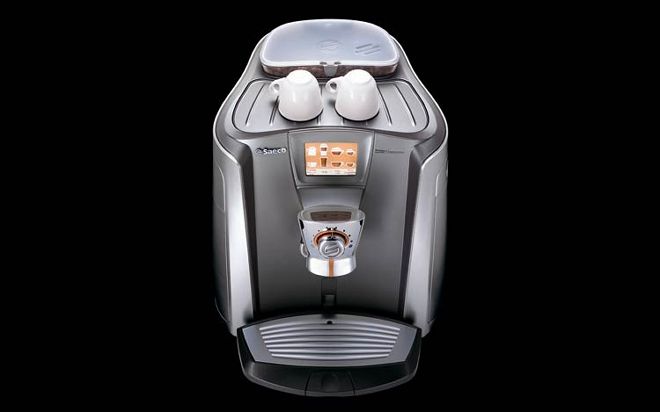
| bmw DesignworksUSA Saeco Primea Touch Plus With Cup Warming front View
Primea: The new generation of fully automatic coffee machines is spearheaded by the Primea Cappuccino line. It is the most exclusive product line, capable of brewing the most varied coffee and milk specialities at the push of a button. Optimized mixing is facilitated by the direct addition of milk from an integrated container. The outstanding character of this product line is reflected in its design by distinctive styling and exceptionally high-quality materials and contrasting colors.
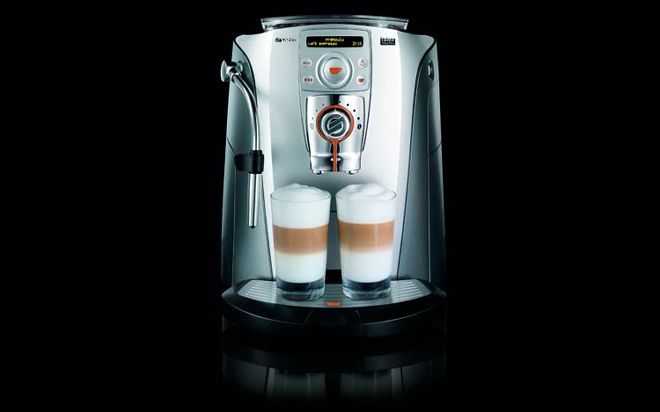
| bmw DesignworksUSA Saeco Talea Ring Plus front View
Talea: Typical attributes of the Talea line are elaborate and subtle design as well as convenience of operation: including a touch-screen display for the model Talea Touch and a milk island, an additional milk frothing system. The design is recognizable through exclusive and distinctive styling and a well-balanced combination of colors.
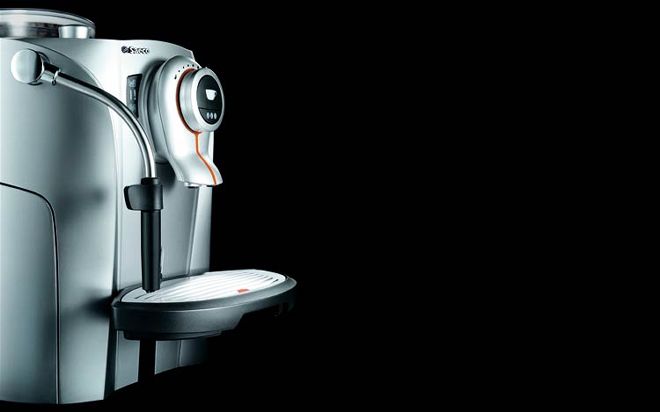
| bmw DesignworksUSA Saeco Odea Giro Plus Drip Tray side View
Odea: The compact Odea line is both simple and dynamic. The Odea line's modern character excels through concise styling underlined by an eye-catching use of color.
Authentic design as the factor of success of premium brands.With their commitment to the development of the new Saeco product identity, experts at BMW Group DesignworksUSA have once again given proof of their outstanding conceptual and creative know-how. This know-how is based on long-standing experience with premium products and leading brands. The cooperation with premium manufacturers from various industries places the highest demands on design quality. A design language is necessary to express the uniqueness of the brand and provide the customer with an exceptionally high-quality product. Therefore, the desires and needs of consumers are emphasised not only when designing a product, but also when developing design concepts and strategies. As a result of these capabilities, BMW Group DesignworksUSA provides its clients with valuable incentives for product conception, a factor of success in achieving corporate goals.
When designing the new line-up of automatic coffee machines by Saeco, both the growing design affinity of the target group and the technical characteristics of the products as well as the values of the brand were taken into consideration. Modern automatic coffee machines serve their users as a symbol of their lifestyle. They enrich everyday life not only in terms of functionality, but also through an eye-catching design. In this way coffee enjoyment and excellent design both blend together into an integral product experience.
The design language of the new Saeco automatic coffee machines is characterised by a close relationship with their product attributes. Flowing lines separate the inner housing from the protective casing and direct attention to the central elements situated one above the other; these being the coffee bean container, control unit and dispenser. The sight of the flow of coffee then becomes a magnificent experience, perceptible even when the machine is not in use. In this way the product is also making a brand statement. Focusing on the passion for coffee is an elementary part of Saeco's corporate philosophy. The design of the new automatic coffee machines immediately reflects this demand authentically and comprehensibly. The premium character of the products is not only based on individual elements but on the coherent overall concept.
Design development: Five phases on the way to market readiness.The synthesis of authentic design, optimised functionality, and emotional elements matures only in an elaborate and painstaking process. From the initial idea to the finished product, this process can be described as including five phases: product identity, design concept creation, design development, design refinement and design implementation.
Product identity:In order that the design should reflect vital statements pertaining to the product and brand, it is vital that objectives are first thoroughly examined. The designers must acquire a concise understanding of all design-relevant factors. These include crucial basic conditions from the field of marketing, sales, and production, but also other factors such as functional and technical requirements as well as production-related premises in context with the product. These are complemented by the competitive position and corporate goals, core competences, and brand values as well as product and brand history.
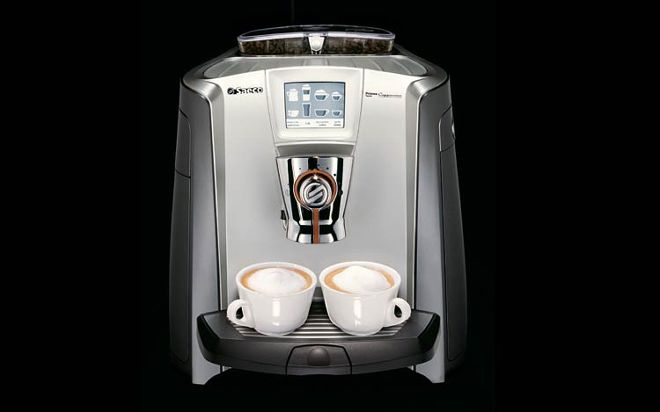
| bmw DesignworksUSA Saeco Primea Touch front View
Complex tasks include the translation of brand attributes into design characteristics. The meaning of brand characteristics is defined and the interpretation transformed into product-distinguishing attributes. Likewise, the desires and needs of the consumer world are analysed, its lifestyle comprehended and conveyed to the overall character of the product. This process includes the presentation, evaluation, and refinement of various alternatives. The visual characterizations and references derived from this search process serve as design criteria and are essential in taking further action.
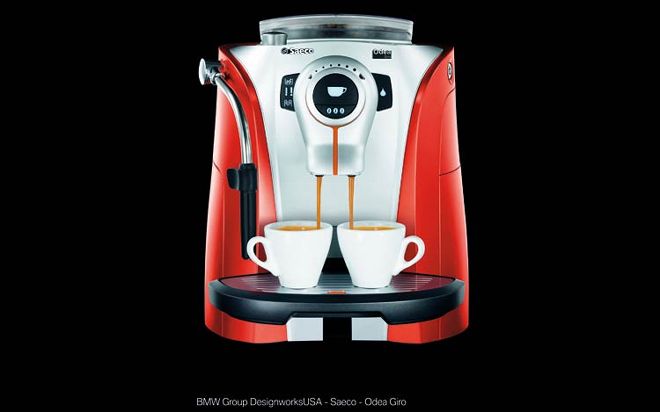
| bmw DesignworksUSA Saeco Odea Giro front View
This fundamental phase can last from just a few weeks to several months. The interplay between technical concepts and necessary basic product architectures, and the product's appeal and design direction is one of the most challenging tasks. After all, it is essential that all available technical innovations are realized in such a way as to enable the potential user to experience them as perfectly functioning, sensible, and visually appealing features. Even at this early stage decisive factors are initiated. For example, the design of control elements depends to a large extent on how diversified the new product's functions are intended to be. This all leads to design-strategic considerations disclosing future options. The aim at the end of this phase is to obtain a convergent and coherent image of all influencing factors and potentials and their effect on the design of the product. The results of this process are developed in collaboration with Saeco marketing.
Design concept creation:Phase two of the design process leads to a contention of different concepts for the new product design. Knowledge gained from the first phase is implemented within a spectrum of design themes, whereby design becomes a tightrope walk within a creatively intuitive and at the same time profoundly methodical procedure. The maximum spectrum of ideas is demonstrated using design sketches. Finally a concept is chosen which, under consideration of all relevant criteria, provides the best representation of the aspired product perception. When designing the new Saeco models, the shared characteristics of all three product lines were conceived and the scaling of the design theme defined for the positioning of each one.
Design development:The chosen concept is then developed using a 3D Computer Aided Design (CAD) model. On the computer the designer deconvolves the design concept through the presentation of all design-relevant surfaces. This step is crucial to the final form-finding and design quality. During this stage the designer specifies the shape and theme of the product by means of the exterior geometry and in close compliance with the engineering concept. The virtual model serves the designer as a basis for the physical validation of the selected design concept. During this phase technical requirements and design intention are brought together.
Detail development:During the next stage on the way to series production all aspects regarding details including: control buttons, textures, color scheme, and product graphics are considered and the design specifications harmonized with the product requirements. In order to fulfill ambitious design intentions, innovations in the manufacturing process and in production methods are also often necessary. It is at thjs point that the product begins to take its final shape. Thanks to the constant communication between designers, engineers, and production specialists, it is ensured that the design can be employed for series production in as many details as possible. Therefore, even subtle details such as the dynamic design of the drip tray or the perfectly modelled transitions between inner and outer housing surfaces also correspond with the designers' vision of the finished product. At the close of this fourth phase, the final design is defined in a so-called "design freeze". The design data (3D CAD) is then handed over to the engineers.
Design implementation:During this phase certain adjustments are necessary due to modifications made in the manufacture of the product. In the final phase the main emphasis is therefore placed on a minimum in modification in order to achieve maximum design and surface quality.
The structure and design process clearly demonstrates how the intensity of the collaboration between BMW Group DesignworksUSA and Saeco has affected the design quality of the new fully automatic coffee machines. The integral design language and the realization of the premium standard in all product details are a result of this exceptionally close and significant cooperation between both partners.
 | bmw DesignworksUSA Saeco Primea Touch Plus With Cup Warming front View
Primea: The new generation of fully automatic coffee machines is spearheaded by the Primea Cappuccino line. It is the most exclusive product line, capable of brewing the most varied coffee and milk specialities at the push of a button. Optimized mixing is facilitated by the direct addition of milk from an integrated container. The outstanding character of this product line is reflected in its design by distinctive styling and exceptionally high-quality materials and contrasting colors.
| bmw DesignworksUSA Saeco Primea Touch Plus With Cup Warming front View
Primea: The new generation of fully automatic coffee machines is spearheaded by the Primea Cappuccino line. It is the most exclusive product line, capable of brewing the most varied coffee and milk specialities at the push of a button. Optimized mixing is facilitated by the direct addition of milk from an integrated container. The outstanding character of this product line is reflected in its design by distinctive styling and exceptionally high-quality materials and contrasting colors.
 | bmw DesignworksUSA Saeco Talea Ring Plus front View
Talea: Typical attributes of the Talea line are elaborate and subtle design as well as convenience of operation: including a touch-screen display for the model Talea Touch and a milk island, an additional milk frothing system. The design is recognizable through exclusive and distinctive styling and a well-balanced combination of colors.
| bmw DesignworksUSA Saeco Talea Ring Plus front View
Talea: Typical attributes of the Talea line are elaborate and subtle design as well as convenience of operation: including a touch-screen display for the model Talea Touch and a milk island, an additional milk frothing system. The design is recognizable through exclusive and distinctive styling and a well-balanced combination of colors.
 | bmw DesignworksUSA Saeco Odea Giro Plus Drip Tray side View
Odea: The compact Odea line is both simple and dynamic. The Odea line's modern character excels through concise styling underlined by an eye-catching use of color.
Authentic design as the factor of success of premium brands.
| bmw DesignworksUSA Saeco Odea Giro Plus Drip Tray side View
Odea: The compact Odea line is both simple and dynamic. The Odea line's modern character excels through concise styling underlined by an eye-catching use of color.
Authentic design as the factor of success of premium brands. | bmw DesignworksUSA Saeco Primea Touch front View
Complex tasks include the translation of brand attributes into design characteristics. The meaning of brand characteristics is defined and the interpretation transformed into product-distinguishing attributes. Likewise, the desires and needs of the consumer world are analysed, its lifestyle comprehended and conveyed to the overall character of the product. This process includes the presentation, evaluation, and refinement of various alternatives. The visual characterizations and references derived from this search process serve as design criteria and are essential in taking further action.
| bmw DesignworksUSA Saeco Primea Touch front View
Complex tasks include the translation of brand attributes into design characteristics. The meaning of brand characteristics is defined and the interpretation transformed into product-distinguishing attributes. Likewise, the desires and needs of the consumer world are analysed, its lifestyle comprehended and conveyed to the overall character of the product. This process includes the presentation, evaluation, and refinement of various alternatives. The visual characterizations and references derived from this search process serve as design criteria and are essential in taking further action.
 | bmw DesignworksUSA Saeco Odea Giro front View
This fundamental phase can last from just a few weeks to several months. The interplay between technical concepts and necessary basic product architectures, and the product's appeal and design direction is one of the most challenging tasks. After all, it is essential that all available technical innovations are realized in such a way as to enable the potential user to experience them as perfectly functioning, sensible, and visually appealing features. Even at this early stage decisive factors are initiated. For example, the design of control elements depends to a large extent on how diversified the new product's functions are intended to be. This all leads to design-strategic considerations disclosing future options. The aim at the end of this phase is to obtain a convergent and coherent image of all influencing factors and potentials and their effect on the design of the product. The results of this process are developed in collaboration with Saeco marketing.
Design concept creation:
| bmw DesignworksUSA Saeco Odea Giro front View
This fundamental phase can last from just a few weeks to several months. The interplay between technical concepts and necessary basic product architectures, and the product's appeal and design direction is one of the most challenging tasks. After all, it is essential that all available technical innovations are realized in such a way as to enable the potential user to experience them as perfectly functioning, sensible, and visually appealing features. Even at this early stage decisive factors are initiated. For example, the design of control elements depends to a large extent on how diversified the new product's functions are intended to be. This all leads to design-strategic considerations disclosing future options. The aim at the end of this phase is to obtain a convergent and coherent image of all influencing factors and potentials and their effect on the design of the product. The results of this process are developed in collaboration with Saeco marketing.
Design concept creation: